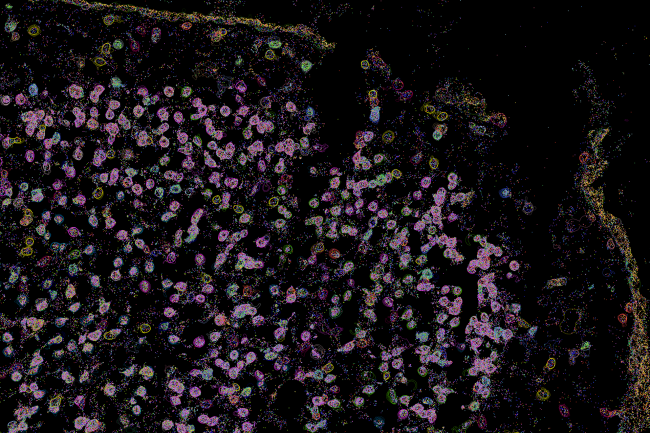SCAnDi was awarded £624,387 by the Economic and Social Research Council, part of UKRI. Work is set to start in April 2024 and expected to last a year.
For further information, or to request interviews, please contact Amy Lyall at the Earlham Institute on 01603 450994 or amy.lyall@earlham.ac.uk
The multi-disciplinary project involves several strands of further work, complementing the work on single-cell analysis.
Complex mixtures of cells, both baseline data and those mimicking crime scene samples, will be obtained for analysis by Dr Katherine Brown from the University of Portsmouth, Dr George Zouganelis from the University of Derby, and Dr Nick Dawnay from Liverpool John Moores University.
Cell mixtures will be catalogued and divided between institutions for various analyses. These will include standard human DNA fingerprinting, but also innovative next generation amplification and sequencing methods to ascertain what DNA can be obtained and whether we can determine its origin.
Dr Katherine Brown, Principal Lecturer in Forensic Science, School of Criminology and Criminal Justice, University of Portsmouth, says:
“The SCAnDI project is revolutionary and I am proud that the University of Portsmouth is a partner. It puts the School of Criminology and Criminal Justice at the forefront of innovative ideas and research that underpins our investigative processes. The project builds our research and teaching capacity, expertise and student experiences, preparing our graduates for the fast-paced environment that is forensic science.”
Dr George Zouganelis, Senior Lecturer in Forensic Science at the University of Derby, says:
“This effort will contribute in changing the way that we look at DNA evidence, especially in highly complex samples encountered in serious crimes.
“It is very exciting that the University of Derby’s OMICS facility (facility dedicated to advanced molecular biology diagnostics) will be a part of the SCAnDI project.
“Our contribution to this project is an essential part of a greater effort to increase our research and teaching aptitude and to enhance the student experience of our Forensic Science graduate and undergraduate students.”
Dr Nick Dawnay, Senior Lecturer in Forensic Science at Liverpool John Moores University, said:
“This project represents an exciting step forward in forensic science. Traditionally we have to work with multiple cells to generate a DNA profile and when evidence samples are mixed getting a clean single-source DNA profile is incredibly difficult.
“The ability to not only identify an individual from a single cell but to first detect and capture that cell would represent a breakthrough.”
Professor Ardhendu Behera from Edge Hill University is working on automated imaging of cells and links to DNA sequences generated from the cell.
“This initiative not only fills a critical gap in current practices but also holds promise for revolutionising technology's role in speeding up key aspects of criminal justice processes.
“Unveiling AI's potential in the UK's Criminal Justice Systems, this project innovates computer vision for automating the identification and detection of intact and fragmented sperm cells in complex mixtures in images. The goal is to cut turnaround times in forensic specimen examination.”
Dr Michael Chen from the University of Edinburgh is looking into microfluidic approaches which could potentially allow in-field isolation of cells.
Dr Michael Chen, Senior Lecturer in Chemical Engineering, Institute for Bioengineering, University of Edinburgh, said:
“I’m honoured to be a part of this groundbreaking research, which has huge potential to enhance the reliability and use of DNA in criminal investigations and court evidence.
“The techniques used to enable the in-field isolation of individual cells from forensic samples and subsequent single-cell analysis of DNA could transform the field of forensic science for good.”
About the Earlham Institute
The Earlham Institute is a hub of life science research, training, and innovation focused on understanding the natural world through the lens of genomics.
Embracing the full breadth of life on Earth, our scientists specialise in developing and testing the latest tools and approaches needed to decode living systems and make predictions about biology.
The Earlham Institute is based within the Norwich Research Park and is one of eight institutes that receive strategic funding from the Biotechnology and Biological Sciences Research Council (BBSRC), part of UKRI, as well as support from other research funders.
@EarlhamInst / Earlham Institute





